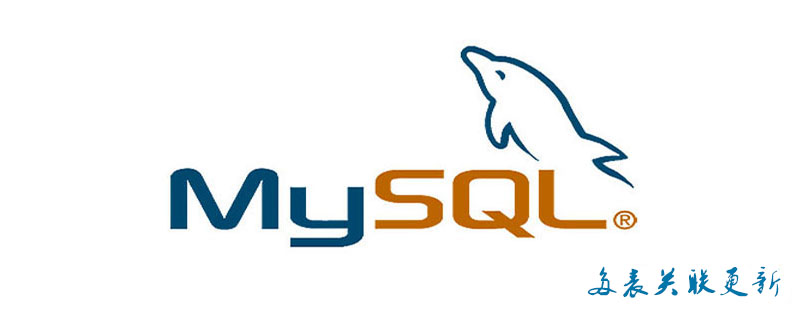mysqlマルチテーブル関連付けの更新
この記事では、mysql で複数テーブルの関連付けの更新を実装する方法を共有し、参考のために一般的に使用される複数テーブルの更新の例をいくつか共有します。
推奨コース: MySQL チュートリアル 。

次の単純なモデルを作成し、いくつかのテスト データを構築します。
あるビジネス アクセプタンス サブシステム BSS では、
--客户资料表 create table customers ( customer_id number(8) not null, -- 客户标示 city_name varchar2(10) not null, -- 所在城市 customer_type char(2) not null, -- 客户类型 ... ) create unique index PK_customers on customers (customer_id)
理由は次のとおりです。顧客の所在地の都市に関する情報は正確ではありませんが、顧客サービス部門の CRM サブシステムでは、一部の顧客の 20% が所在する都市などの正確な情報がプロアクティブなサービスを通じて取得されているため、これを抽出します情報の一部を一時的にテーブルに追加します。 テーブル内:
create table tmp_cust_city ( customer_id number(8) not null, citye_name varchar2(10) not null, customer_type char(2) not null )
1) 最も単純な形式
--经确认customers表中所有customer_id小于1000均为'北京' --1000以内的均是公司走向全国之前的本城市的老客户:) update customers set city_name='北京' where customer_id<1000
2) 2 つのテーブル (複数のテーブル) に関連する更新 -- テーブル内の接続のみwhere 句
--这次提取的数据都是VIP,且包括新增的,所以顺便更新客户类别 update customers a -- 使用别名 set customer_type='01' --01 为vip,00为普通 where exists (select 1 from tmp_cust_city b where b.customer_id=a.customer_id )
3) 2 つのテーブル (複数テーブル) の関連付けの更新 -- 変更された値は別のテーブルから計算されます
update customers a -- 使用别名 set city_name=(select b.city_name from tmp_cust_city b where b.customer_id=a.customer_id) where exists (select 1 from tmp_cust_city b where b.customer_id=a.customer_id ) -- update 超过2个值 update customers a -- 使用别名 set (city_name,customer_type)=(select b.city_name,b.customer_type from tmp_cust_city b where b.customer_id=a.customer_id) where exists (select 1 from tmp_cust_city b where b.customer_id=a.customer_id )
このステートメントでは、
(select b.city_name,b.customer_type from tmp_cust_city b where b.customer_id=a.customer_id ) 与 (select 1 from tmp_cust_city b where b.customer_id=a.customer_id )
update customers a -- 使用别名 set city_name=nvl((select b.city_name from tmp_cust_city b where b.customer_id=a.customer_id),a.city_name) 或者 set city_name=nvl((select b.city_name from tmp_cust_city b where b.customer_id=a.customer_id),'未知') -- 当然这不符合业务逻辑了
rree
以上がmysqlマルチテーブル関連付けの更新の詳細内容です。詳細については、PHP 中国語 Web サイトの他の関連記事を参照してください。

ホットAIツール

Undresser.AI Undress
リアルなヌード写真を作成する AI 搭載アプリ

AI Clothes Remover
写真から衣服を削除するオンライン AI ツール。

Undress AI Tool
脱衣画像を無料で

Clothoff.io
AI衣類リムーバー

AI Hentai Generator
AIヘンタイを無料で生成します。

人気の記事

ホットツール

メモ帳++7.3.1
使いやすく無料のコードエディター

SublimeText3 中国語版
中国語版、とても使いやすい

ゼンドスタジオ 13.0.1
強力な PHP 統合開発環境

ドリームウィーバー CS6
ビジュアル Web 開発ツール

SublimeText3 Mac版
神レベルのコード編集ソフト(SublimeText3)

ホットトピック
 7500
7500
 15
15
 1377
1377
 52
52
 78
78
 11
11
 19
19
 54
54
 MySQL:初心者向けのデータ管理の容易さ
Apr 09, 2025 am 12:07 AM
MySQL:初心者向けのデータ管理の容易さ
Apr 09, 2025 am 12:07 AM
MySQLは、インストールが簡単で、強力で管理しやすいため、初心者に適しています。 1.さまざまなオペレーティングシステムに適した、単純なインストールと構成。 2。データベースとテーブルの作成、挿入、クエリ、更新、削除などの基本操作をサポートします。 3.参加オペレーションやサブクエリなどの高度な機能を提供します。 4.インデックス、クエリの最適化、テーブルパーティション化により、パフォーマンスを改善できます。 5。データのセキュリティと一貫性を確保するために、バックアップ、リカバリ、セキュリティ対策をサポートします。
 MySQL:簡単な学習のためのシンプルな概念
Apr 10, 2025 am 09:29 AM
MySQL:簡単な学習のためのシンプルな概念
Apr 10, 2025 am 09:29 AM
MySQLは、オープンソースのリレーショナルデータベース管理システムです。 1)データベースとテーブルの作成:createdatabaseおよびcreateTableコマンドを使用します。 2)基本操作:挿入、更新、削除、選択。 3)高度な操作:参加、サブクエリ、トランザクション処理。 4)デバッグスキル:構文、データ型、およびアクセス許可を確認します。 5)最適化の提案:インデックスを使用し、選択*を避け、トランザクションを使用します。
 phpmyadminを開く方法
Apr 10, 2025 pm 10:51 PM
phpmyadminを開く方法
Apr 10, 2025 pm 10:51 PM
次の手順でphpmyadminを開くことができます。1。ウェブサイトコントロールパネルにログインします。 2。phpmyadminアイコンを見つけてクリックします。 3。MySQL資格情報を入力します。 4.「ログイン」をクリックします。
 Navicatプレミアムの作成方法
Apr 09, 2025 am 07:09 AM
Navicatプレミアムの作成方法
Apr 09, 2025 am 07:09 AM
NAVICATプレミアムを使用してデータベースを作成します。データベースサーバーに接続し、接続パラメーターを入力します。サーバーを右クリックして、[データベースの作成]を選択します。新しいデータベースの名前と指定された文字セットと照合を入力します。新しいデータベースに接続し、オブジェクトブラウザにテーブルを作成します。テーブルを右クリックして、データを挿入してデータを挿入します。
 MySQLおよびSQL:開発者にとって不可欠なスキル
Apr 10, 2025 am 09:30 AM
MySQLおよびSQL:開発者にとって不可欠なスキル
Apr 10, 2025 am 09:30 AM
MySQLとSQLは、開発者にとって不可欠なスキルです。 1.MYSQLはオープンソースのリレーショナルデータベース管理システムであり、SQLはデータベースの管理と操作に使用される標準言語です。 2.MYSQLは、効率的なデータストレージと検索機能を介して複数のストレージエンジンをサポートし、SQLは簡単なステートメントを通じて複雑なデータ操作を完了します。 3.使用の例には、条件によるフィルタリングやソートなどの基本的なクエリと高度なクエリが含まれます。 4.一般的なエラーには、SQLステートメントをチェックして説明コマンドを使用することで最適化できる構文エラーとパフォーマンスの問題が含まれます。 5.パフォーマンス最適化手法には、インデックスの使用、フルテーブルスキャンの回避、参加操作の最適化、コードの読み取り可能性の向上が含まれます。
 NavicatでMySQLへの新しい接続を作成する方法
Apr 09, 2025 am 07:21 AM
NavicatでMySQLへの新しい接続を作成する方法
Apr 09, 2025 am 07:21 AM
手順に従って、NAVICATで新しいMySQL接続を作成できます。アプリケーションを開き、新しい接続(CTRL N)を選択します。接続タイプとして「mysql」を選択します。ホスト名/IPアドレス、ポート、ユーザー名、およびパスワードを入力します。 (オプション)Advanced Optionsを構成します。接続を保存して、接続名を入力します。
 NAVICATでSQLを実行する方法
Apr 08, 2025 pm 11:42 PM
NAVICATでSQLを実行する方法
Apr 08, 2025 pm 11:42 PM
NAVICATでSQLを実行する手順:データベースに接続します。 SQLエディターウィンドウを作成します。 SQLクエリまたはスクリプトを書きます。 [実行]ボタンをクリックして、クエリまたはスクリプトを実行します。結果を表示します(クエリが実行された場合)。
 Navicatは、データベースエラーコードとソリューションに接続します
Apr 08, 2025 pm 11:06 PM
Navicatは、データベースエラーコードとソリューションに接続します
Apr 08, 2025 pm 11:06 PM
データベースに接続するときの一般的なエラーとソリューション:ユーザー名またはパスワード(エラー1045)ファイアウォールブロック接続(エラー2003)接続タイムアウト(エラー10060)ソケット接続を使用できません(エラー1042)SSL接続エラー(エラー10055)接続の試みが多すぎると、ホストがブロックされます(エラー1129)データベースは存在しません(エラー1049)




